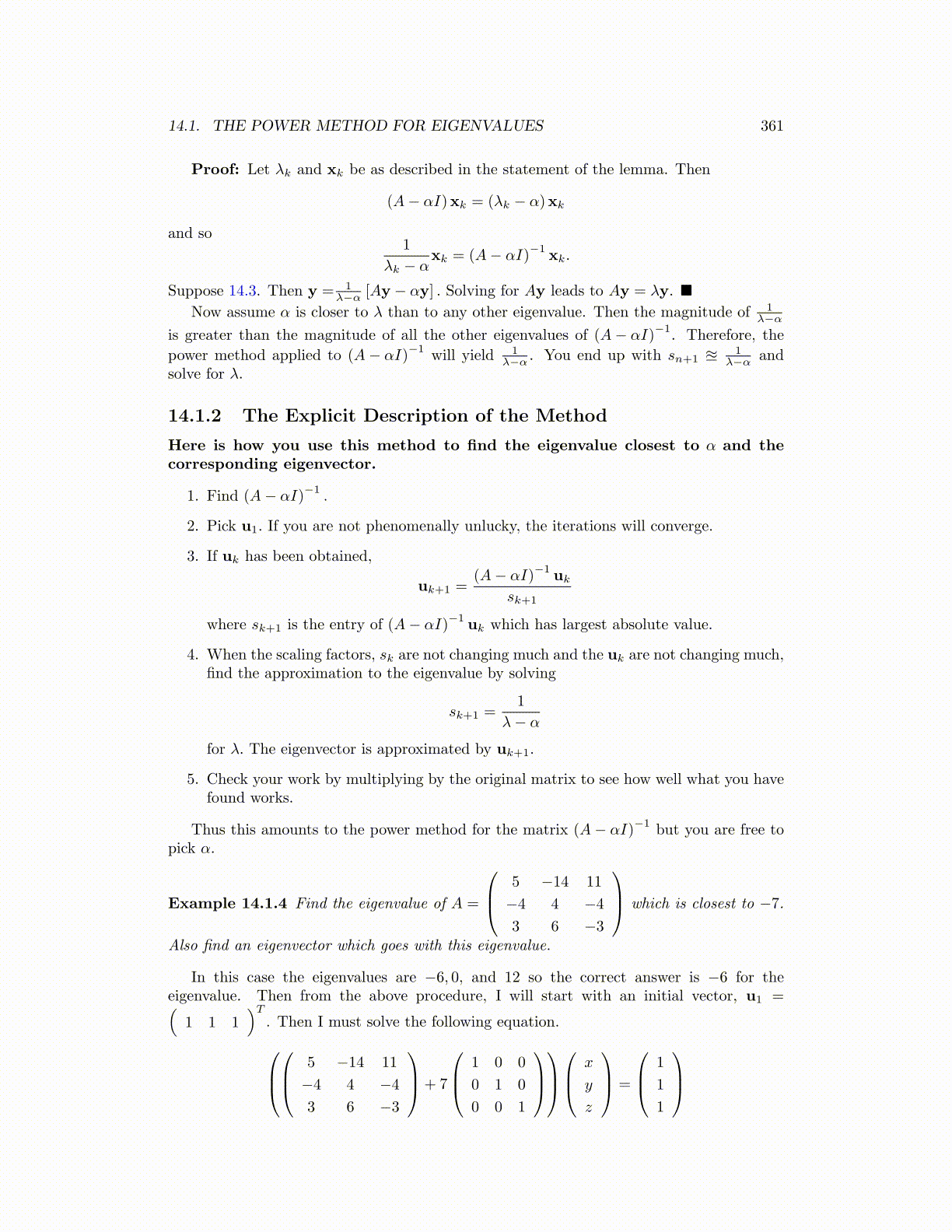
14.1. THE POWER METHOD FOR EIGENVALUES 361
Proof: Let λk and xk be as described in the statement of the lemma. Then
(A− αI)xk = (λk − α)xk
and so1
λk − αxk = (A− αI)
−1xk.
Suppose 14.3. Then y = 1λ−α [Ay − αy] . Solving for Ay leads to Ay = λy. ■
Now assume α is closer to λ than to any other eigenvalue. Then the magnitude of 1λ−α
is greater than the magnitude of all the other eigenvalues of (A− αI)−1
. Therefore, the
power method applied to (A− αI)−1
will yield 1λ−α . You end up with sn+1 ≊ 1
λ−α andsolve for λ.
14.1.2 The Explicit Description of the Method
Here is how you use this method to find the eigenvalue closest to α and thecorresponding eigenvector.
1. Find (A− αI)−1.
2. Pick u1. If you are not phenomenally unlucky, the iterations will converge.
3. If uk has been obtained,
uk+1 =(A− αI)
−1uk
sk+1
where sk+1 is the entry of (A− αI)−1
uk which has largest absolute value.
4. When the scaling factors, sk are not changing much and the uk are not changing much,find the approximation to the eigenvalue by solving
sk+1 =1
λ− α
for λ. The eigenvector is approximated by uk+1.
5. Check your work by multiplying by the original matrix to see how well what you havefound works.
Thus this amounts to the power method for the matrix (A− αI)−1
but you are free topick α.
Example 14.1.4 Find the eigenvalue of A =
5 −14 11
−4 4 −4
3 6 −3
which is closest to −7.
Also find an eigenvector which goes with this eigenvalue.
In this case the eigenvalues are −6, 0, and 12 so the correct answer is −6 for theeigenvalue. Then from the above procedure, I will start with an initial vector, u1 =(
1 1 1)T
. Then I must solve the following equation. 5 −14 11
−4 4 −4
3 6 −3
+ 7
1 0 0
0 1 0
0 0 1
x
y
z
=
1
1
1